Related Research Articles
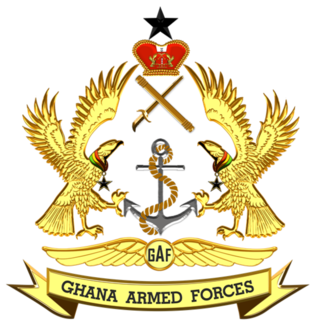
The Ghana Armed Forces (GAF) is the unified armed force of Ghana, consisting of the Army (GA), Navy (GN), and Ghana Air Force.
Lieutenant-General George Noble Molesworth, idc (1890–1968) was an officer commissioned into the British Army serving in India and saw active service in the Third Anglo-Afghan War. He later transferred to the British Indian Army and rose to oversee intelligence and to be Deputy Chief of General Staff of Army Headquarters India. He also served as Military Secretary to the India Office.
The 10th Princess Mary's Own Gurkha Rifles,, was originally a rifle regiment of the British Indian Army. The regiment was formed in 1890, taking its lineage from a police unit and over the course of its existence it had a number of changes in designation and composition. It took part in a number of campaigns on the Indian frontiers during the 19th and early 20th centuries, before fighting in the First World War, the Third Anglo-Afghan War and the Second World War. Following India's independence in 1947, the regiment was one of four Gurkha regiments to be transferred to the British Army. In the 1960s it was active in the Malayan Emergency and Indonesian Confrontation. It was amalgamated with the other three British Gurkha regiments to form the Royal Gurkha Rifles in 1994.

The United Nations Operation in the Congo was a United Nations peacekeeping force deployed in the Republic of the Congo in 1960 in response to the Congo Crisis. ONUC was the UN's first peacekeeping mission with significant military capabilities and remains one of the largest UN operations in size and scope.

The Madras Regiment is the oldest infantry regiment of the Indian Army, originating in the 1750s. The regiment took part in numerous campaigns with both the British Indian Army and the post-independence Indian Army.
In the siege of Jadotville[ʒa.do.vil] in September 1961, a small contingent of the Irish Army's 35th Battalion, designated "A" Company, serving as part of the United Nations Operation in the Congo were besieged in the mining town of Jadotville by Katangese forces loyal to the secessionist State of Katanga. The siege took place during the seven-day escalation of a stand-off between ONUC and Katangese forces during Operation Morthor. Although the contingent of 155 Irish soldiers repelled attacks by a 3,000-man Katangese force for five days while an undersized relief force of Irish, Indian and Swedish troops attempted to reach them, they were eventually forced to surrender having run out of ammunition and water. "A" Company was subsequently held as prisoners of war for approximately one month. The Irish forces inflicted approximately 1,300 casualties on the Congolese force, with no deaths amongst "A" Company.
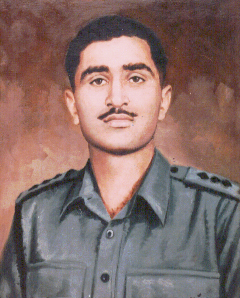
Captain Gurbachan Singh Salaria, PVC was an Indian Army officer and member of a United Nations peacekeeping force. Salaria was an alumnus of King George's Royal Indian Military College and the National Defence Academy. He was the first NDA alumnus and is the only UN Peacekeeper to be awarded a Param Vir Chakra (PVC), India's highest wartime military decoration.

The 17th Infantry Division is a formation of the Indian Army. During World War II, it had the distinction of being continually in combat during the three-year-long Burma Campaign. The division was re-raised in 1960 and 17 Mountain Division is presently located in Sikkim under XXXIII Corps.
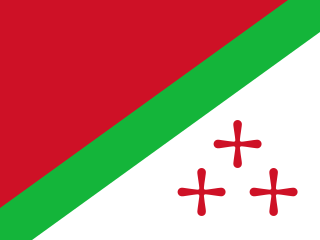
The State of Katanga, also known as the Republic of Katanga, was a breakaway state that proclaimed its independence from Congo-Léopoldville on 11 July 1960 under Moise Tshombe, leader of the local Confédération des associations tribales du Katanga (CONAKAT) political party. The new Katangese state did not enjoy full support throughout the province and was constantly plagued by ethnic strife in its northernmost region. It was dissolved in 1963 following an invasion by United Nations Operation in the Congo (ONUC) forces, and reintegrated with the rest of the country as Katanga Province.

The 10th Indian Infantry Division was a war formed infantry division of the Indian Army during World War II. In four years, the division travelled over 4,000 miles (6,400 km) from Tehran to Trieste, fought three small wars, and fought two great campaigns: the Anglo-Iraqi War, the Invasion of Syria-Lebanon, the Anglo-Soviet invasion of Iran, the North African Campaign, and the Italian Campaign.
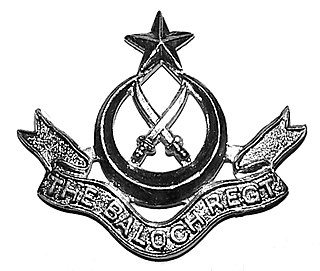
The Baloch Regiment is an infantry regiment of the Pakistan Army. The modern regiment was formed in May 1956 by the merger of 8th Punjab and Bahawalpur Regiments with the Baluch Regiment. Since then, further raisings have brought the strength of the Regiment to 27 battalions. The Baloch Regiment is descended from the infantry of the old British Indian Army and is named after Balochistan. Before 1991, it was called the Baluch Regiment but the spelling was changed to 'Baloch' to better reflect the correct pronunciation.

Colonel Carl Jonas Wærn was a Swedish Army officer who led Swedish, Irish, and Indian peacekeeping troops in the Congo Crisis. He also commanded Swedish forces on Cyprus in 1964. Later, he served as adjutant to Gustaf VI Adolf of Sweden.

The 99th Mountain Brigade, formerly the 99th Indian Infantry Brigade, is an infantry formation of the Indian Army.

Roger Louis Faulquesa.k.a.René Faulques, was a French Army Colonel, a graduate of the École spéciale militaire de Saint-Cyr, a paratrooper officer of the French Foreign Legion, and a mercenary. He fought in World War II, the First Indochina War, the Suez Crisis, the Algerian War, the Congo Crisis, the North Yemen Civil War and the Nigerian Civil War. He is one of France's most decorated soldiers.

Operation Grandslam was an offensive undertaken by United Nations peacekeeping forces from 28 December 1962 to 15 January 1963 against the forces of the State of Katanga, a secessionist state rebelling against the Republic of the Congo in central Africa. The Katangese forces were decisively defeated and Katanga was forcibly reintegrated into the Congo.
Operation Rum Punch or Operation Rampunch was a military action undertaken by United Nations peacekeeping forces on 28 August 1961 against the military of the State of Katanga, a secessionist state from the Republic of the Congo in central Africa. UN troops arrested 79 foreign mercenaries and officers employed by Katanga with little conflict.

Patrick Quinlan (1919–1997) was an Irish Army officer who commanded the Irish UN force that fought at the Siege of Jadotville in Katanga in 1961, and surrendered when they ran out of ammunition and other supplies. Despite the initial lack of recognition for the events leading up to the surrender, in the years following Quinlan's death his reputation in Ireland was restored.

The Katangese Gendarmerie, officially the Katangese Armed Forces, was the paramilitary force of the unrecognized State of Katanga in Central Africa from 1960 to 1963. The forces were formed upon the secession of Katanga from the Republic of the Congo with help from Belgian soldiers and former officers of the Force Publique. Belgian troops also provided much of the early training for the Gendarmerie, which was mainly composed of Katangese but largely led by Belgians and later European mercenaries.
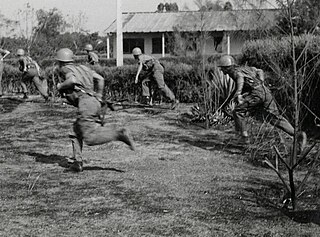
Operation Unokat, also styled Operation UNOKAT, was an offensive undertaken by United Nations peacekeeping forces from 5 December 1961 to 21 December 1961 against the gendarmerie of the State of Katanga, a secessionist state rebelling against the Republic of the Congo in central Africa. The United Nations had tried several times to reconcile the government of the Congo with the State of Katanga, which had declared independence under Moïse Tshombe with Belgian support in 1960.

The Jadotville Medal, is a campaign medal which can only be issued to the members of "A" Company, 35th Infantry Battalion who fought during the Siege of Jadotville in 1961. "A" Company, under the command of Commandant Pat Quinlan, was part of the Irish Army forces participating in the United Nations peacekeeping operations in Congo. The medal depicts a Celtic warrior and the shoulder badge that was worn by all Irish UN soldiers in the Congo. Also depicted on the medal are the words Cosaint Chalma and Misneach (Courage).
References
- 1 2 3 4 "U.N. Military Chief K.A.S. Raja". The New York Times. 7 December 1961. p. A2.
- ↑ January 1941 Indian Army List. Defence Department, Government of India, 1941
- ↑ October 1941 Indian Army List. Defence Department, Government of India, 1941
- ↑ July 1942 and April 1943 Indian Army List. Defence Department, Government of India, 1942 & 1943
- ↑ October 1946 Indian Army List. Page 269c. Defence Department, Government of India, 1946
- ↑ "Jammu and Kashmir War". Official Indian Army Web Portal. Indian Army. Retrieved 19 May 2021.
- ↑ "UN Missions". Official Indian Army Web Portal. Indian Army. Retrieved 19 May 2021.
- ↑ Mockaitis 1999, p. 27.
- ↑ Colvin 1968, p. 73.
- ↑ "Jawans come home from Congo". Forum: The Indian Monthly Magazine. 1962. p. 17.
- ↑ Nayudu, Swapna Kona (28 April 2021). "India's under-appreciated role as sword arm of the UN". Mint . Retrieved 19 May 2021.